This entry includes a walking tour! Take the tour.
Introduction
Text-to-speech Audio
Images
Spring in Bryant Park, facing the New York Public Library (image from Bryant Park's official blog)
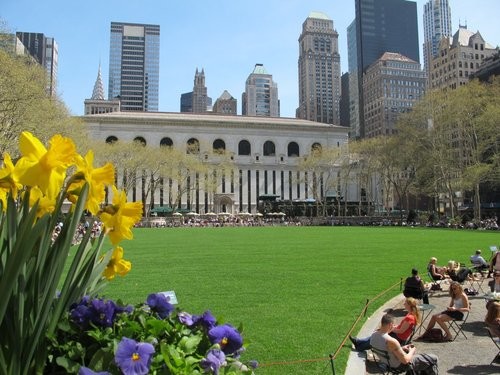
Aerial view from Latting Observatory of Croton Reservoir (where the main branch of the New York Public Library now stands) and the Crystal Palace (where Bryant Park now stands) (image from Bryant Park official website)
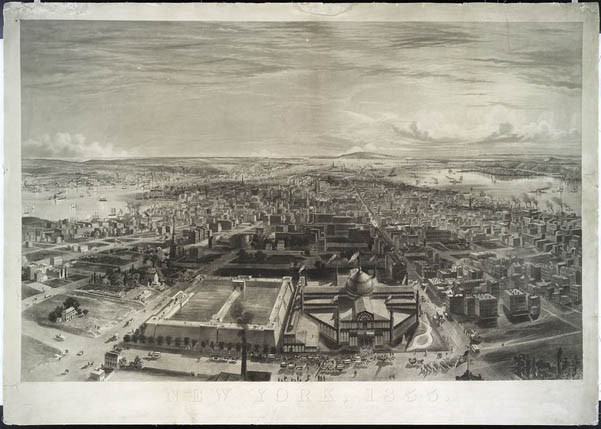
Drawing of The Crystal Palace by F.F. Palmer, 1853 (image from Bryant Park official website)
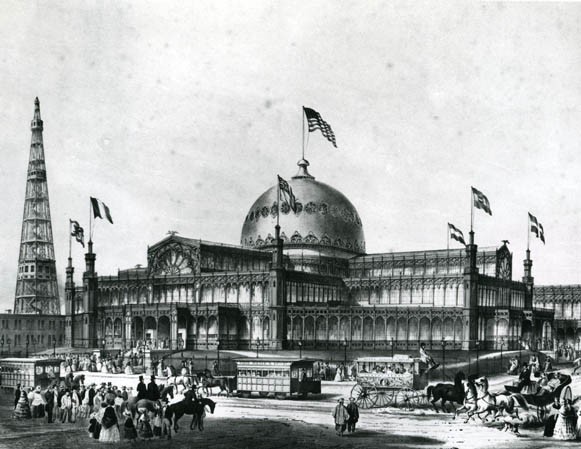
Destruction of the Crystal Palace by fire, 1858 (image from Bryant Park official website)
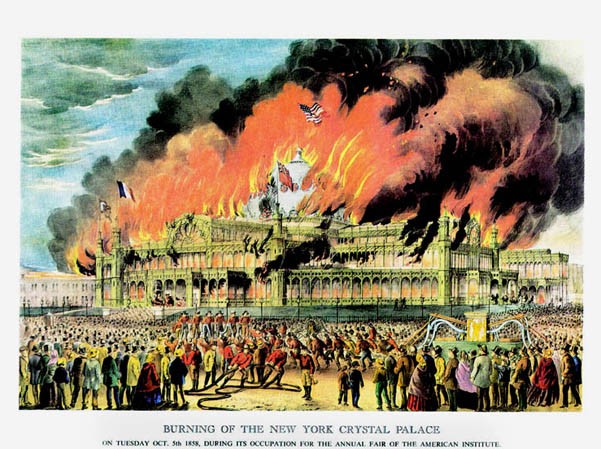
Bryant Park in the early 20th century, facing the New York Public Library (image from Bryant Park official website)
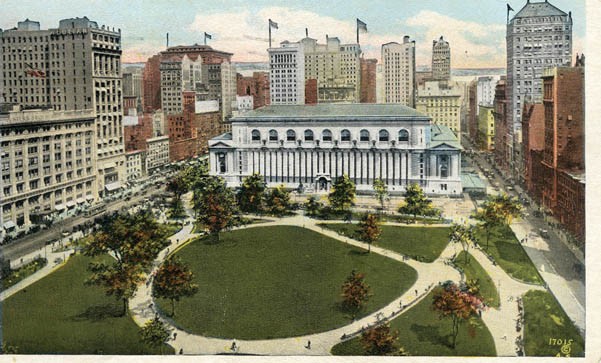
Bryant Park in 1912 (image from Bryant Park official website)
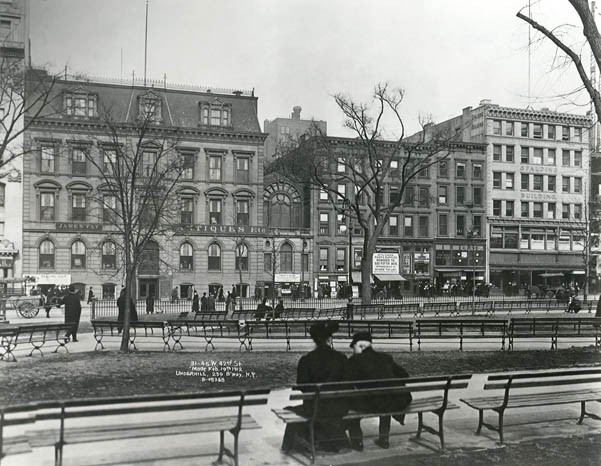
Bryant Park in 1937, facing the New York Public Library (image from Bryant Park official website)
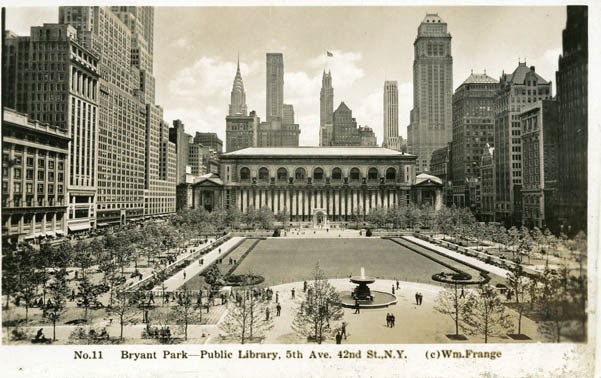
Portrait of the park's namesake, William Cullen Bryant (image from Bryant Park official website)
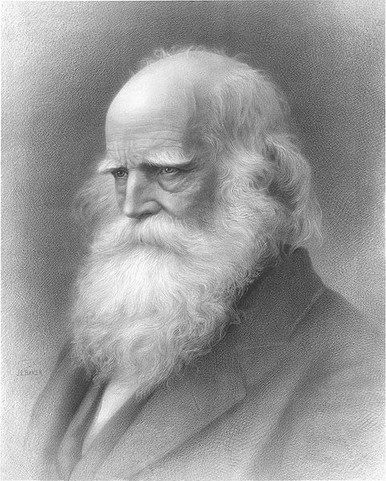
William Cullen Bryant memorial, Bryant Park (image from Historic Markers Database)
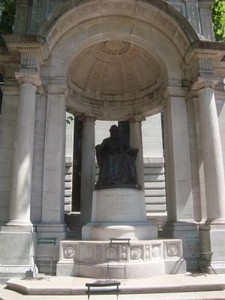
The Crystal Palace exterior (image from Bryant Park official website)
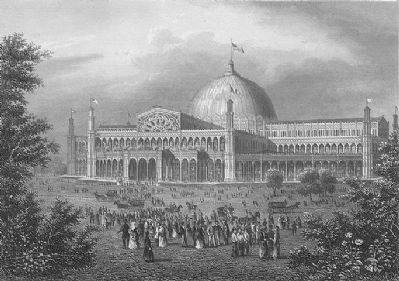
The Crystal Palace interior (image from Bryant Park official website)
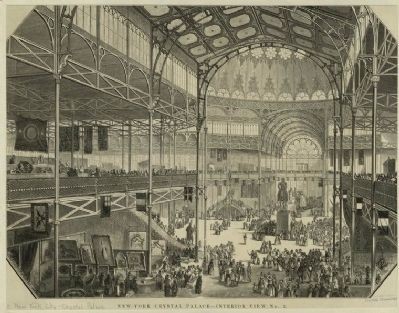
The Crystal Palace marker, Bryant Park (image from Historic Markers Database)
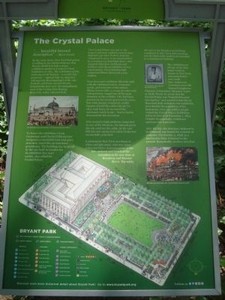
Early Brant Park marker (image from Historic Markers Database)

Monuments at Bryant Park marker (image from Historic Markers Database)
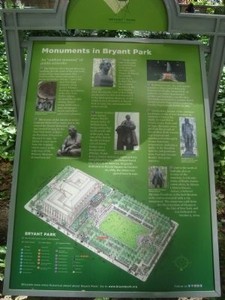
Buildings Overlooking Bryant Park marker (image from Historic Markers Database)
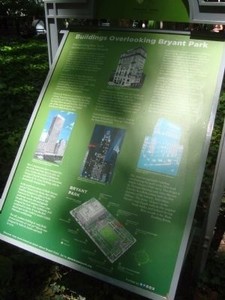
Bryant Park Today marker (image from Historic Markers Database)
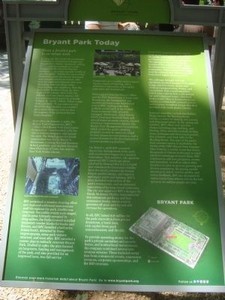
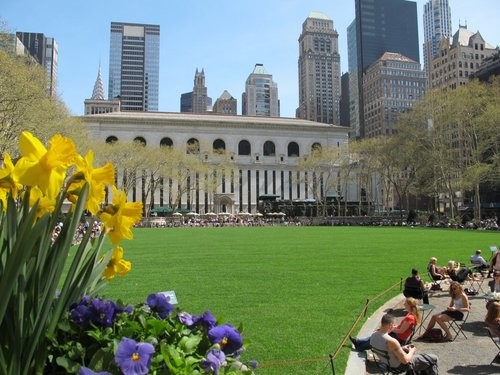
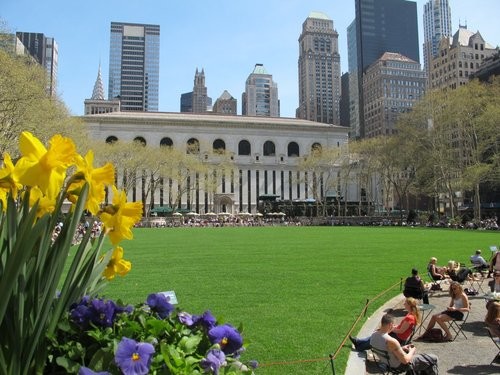
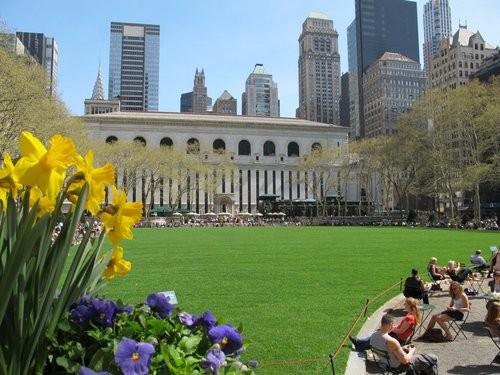
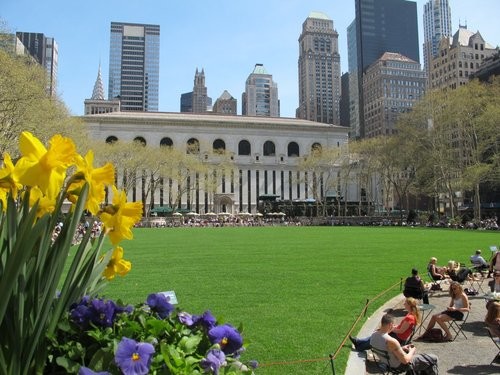
Backstory and Context
Text-to-speech Audio
The area in 1686 was designated public property by New York Colonial Governor Thomas Dongan. George Washington's troops even raced across the site after routing the British at the Battle of Long Island near the start of the Revolutionary War. The land went under the jurisdiction of New York City in 1822 and became a potter's field a year later. In preparation for the Croton Reservoir on the adjacent part of the land, the potter field was decommissioned in 1840 and later renamed Reservoir Square. The area was later used as an encampment for Union Army troops in the Civil War, with a failed permit suggesting an armory be built on the site.
Reservoir Square was later renamed in 1878 Bryant Park to honor the recently deceased poet and long-time editor of the New York Evening Post, William Cullen Bryant. Around the same time, plans were approved for the New York Public Library, which was later completed in 1911 with two comfort stations located near the east end of Bryant Park. The north half of the park was closed throughout the 1920s due to the construction of the Interborough Rapid Transit (IRT) subway tunnel along 42nd Street. In 1934, there was a contest to redesign the park, with the winning submission including a classical scheme of a large central lawn, formal pathways, and an oval plaza containing the Josephine Shaw Lowell Memorial Fountain at the west end.
In 1974, the Landmarks Preservation Commission designated the park as a scenic landmark. Although the park was a prime spot for crime and drug trafficking in the 1970s, but by the 1990s all the crime and traffickers were gone and lunchtime head counts averaged around 4,000. In the summer of 1988, numerous renovation projects that included new entrances, restaurant pavilions, and concession kiosks were introduced and completed in stages by the 1990s. Bryant Park then reopened in April 1992 to praise from citizens, media, and urbanists.
Bryant Park Today
Modern-day Bryant Park, though less than ten acres in size, offers a wide range of activities and features. There are a formal lawn and gardens with promenades, and the park attracts over 120 species of birds. There's an outdoor reading room (created during the Great Depression by the New York Public Library); the Art Cart, which offers free art supplies and classes; restaurants and food kiosks; and games and game social events including chess, backgammon, and other table and park games. In the winter, the park is transformed into the Winter Village, with an ice skating rink and holiday shops. Park events include tai chi, yoga, juggling, fencing, Shakespeare and piano performances, poetry recitations, and tours.
Walking tours include information about the park's history, design, and amenities, and last about 45 minutes each. A free audio tour voiced by Matthew Broderick is also available through both the Bryant Park official website and iTunes. Bird walks are offered in the mornings and afternoons, and 120 species have been spotted so far.
Cite This Entry
Marian, Sara et. al. "Bryant Park and the New York Public Library." Clio: Your Guide to History. January 16, 2021. Accessed March 29, 2025. https://theclio.com/entry/21864
Sources
"Park History." Bryant Park. Accessed Web, 5/13/17. http://www.bryantpark.org/about-us/history.html.

